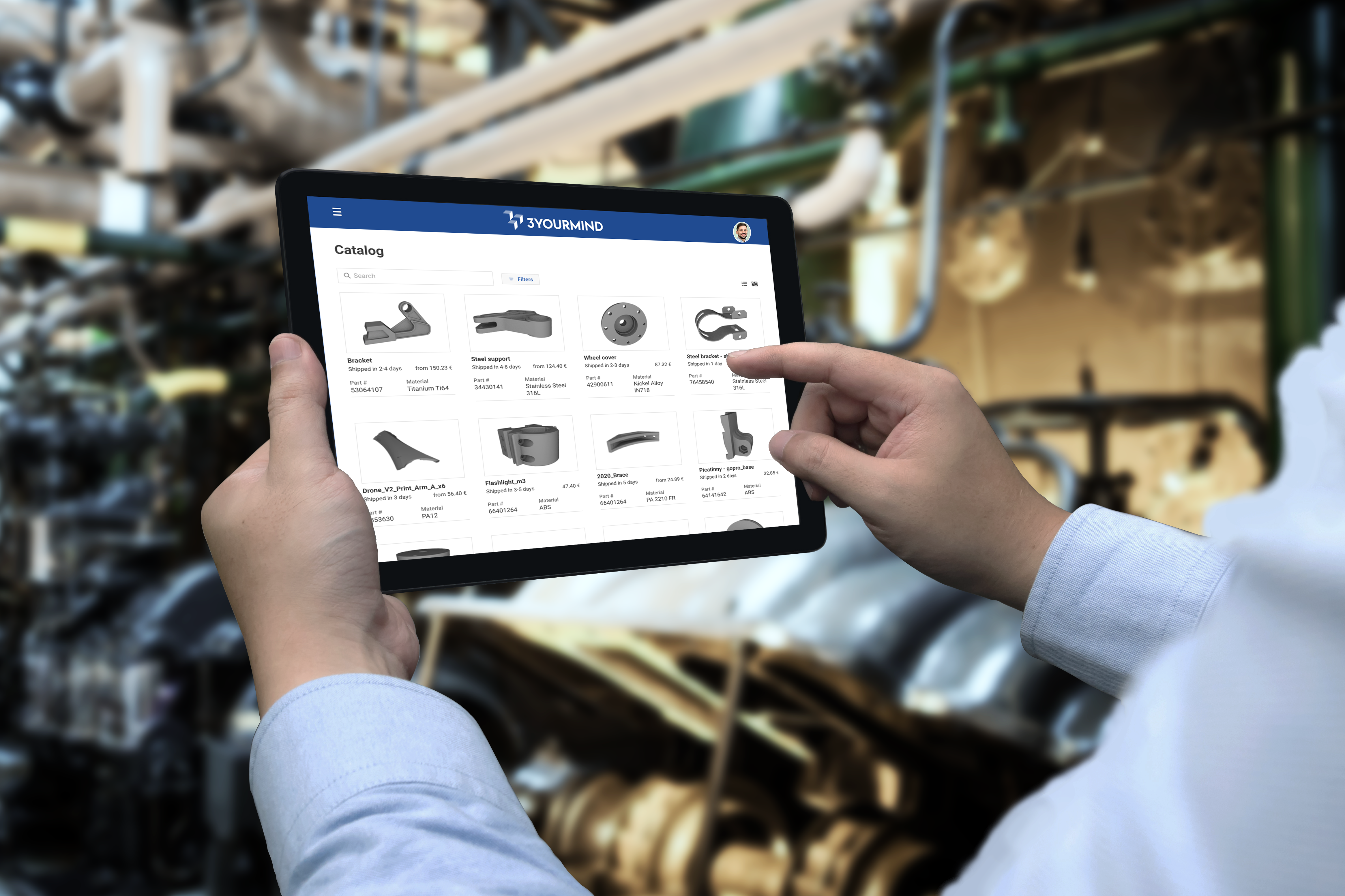7 Questions to Ask About Additive Manufacturing Software
Learn what questions you should ask your additive manufacturing software partner before signing the dotted line.
Shopping for software is difficult.
Your organization has specific goals and processes for additive manufacturing (also known as on-demand manufacturing). More often than not, out-of-the-box software solutions want you to adapt your processes to fit their workflows. Sometimes that works, but other times, you're left with an expensive solution that your employees are slow to adopt or hesitant to use.
In this article, we will discuss seven questions you should ask additive manufacturing software vendors before making a big purchase.
Does the software cover the full additive manufacturing value chain?
Additive manufacturing isn't just about producing parts. From the time a part is identified to the time a part is produced, a lot of critical data should be collected, including everything from cost savings to material lot numbers.
Software that serves only certain aspects of the AM value chain, such as only manufacturing execution systems or enterprise resource management, can make your data fragmented and difficult to access. Although there are benefits to individual solutions, too many tools in your tech stack can bloat your software investment and becomes difficult to manage over time.
Instead, look for an on-demand manufacturing software solution that creates a continuous digital thread of information to view and manage your data within a single interface.
Does it help you find more additive manufacturing business cases?
Investing in additive manufacturing machines and software is great, but without a catalog of proven, qualified parts, generating a return on investment is difficult.
Analyzing parts individually is time-consuming and relies on highly knowledgeable employees to review and qualify parts. Additive manufacturing software solutions that can analyze 2D and 3D part drawings for printability and economic feasibility save these experts time by prioritizing which parts make the most sense for the business to qualify. With less time focused on finding parts and more time spent producing parts, businesses can begin to experience the benefits of additive manufacturing.

Can you build digital part inventories in the software?
Imagine... You know what part you want to produce, and you've qualified it for additive manufacturing, but to print it, you must carry a USB stick with a part file to the 3D printer. For low-volume jobs, that method might suffice. Still, as companies scale up production, digital inventories can be useful for ordering parts – whether through in-house facilities or with an external supplier.
Essentially, digital inventories like 3YOURMIND's create digital twins of real parts and store them in a part catalog. When it's time to order the part, procurement and supply chain managers can easily send the order to machines across multiple facilities within the organization or request the part to be produced by an approved external supplier. With this method, businesses can gain more transparency on the status of their parts while ensuring that their intellectual property is protected.
Does the software enable distributed manufacturing?
One of the greatest benefits of on-demand manufacturing is decentralizing and distributing production across multiple sites. However, if your software cannot connect to multiple machines and facilities to streamline part ordering and fulfillment, you may end up missing the mark on you organization's manufacturing potential.
Does the additive manufacturing software provide accurate pricing?
Pricing is a hot topic in additive manufacturing. When procurement and supply chain managers order a part, they want to know exactly how much it will cost and how quickly it can be delivered.
Additive manufacturing software that provides accurate pricing formulas makes decision-making easier by reducing manual price calculations and time spent generating price quotes. When software calculates part prices for you, you can quickly make decisions based on your budget and timelines.
-1.jpg?width=3440&height=1935&name=Agile-MES-engineer-scheduling-production%20(1)-1.jpg)
How does the additive manufacturing software manage production jobs?
Before selecting an additive manufacturing software partner, consider your current and future production management needs. For example, is the software compatible with your current machines? Can you specify what data needs to be collected? Can you maximize machine utilization by scheduling print jobs based on part orientation?
Knowing your production requirements before partnering with a software vendor can help you set the groundwork for scaling up your manufacturing activities.
Is the additive manufacturing software cloud-based or on-premise?
Although the cloud offers enhanced capabilities for software users, it’s not always the right solution for every company. Organizations that handle secure, privileged data and intellectual property information will want to opt for an on-premise solution to enhance data security.
Not sure whether cloud-based or on-premise software is right for your organization? Read this article to learn more about the pros and cons of on-premise vs. cloud-based software.
Can you customize the software to adapt to your business processes?
Your company doesn’t deserve a one-size-fits all solution. Each organization has goals and processes unique to its individual needs, and changing them to fit a software tool is akin to fitting a square peg in a round hole.
Instead, select a partner that's flexible to adapt to your requirements. Not only will this ensure your organization makes the most out of it's software investment, it will also help you to reap the benefits of your additive manufacturing strategy.
Have more questions? Browse our software solutions to learn more, or contact us directly.
